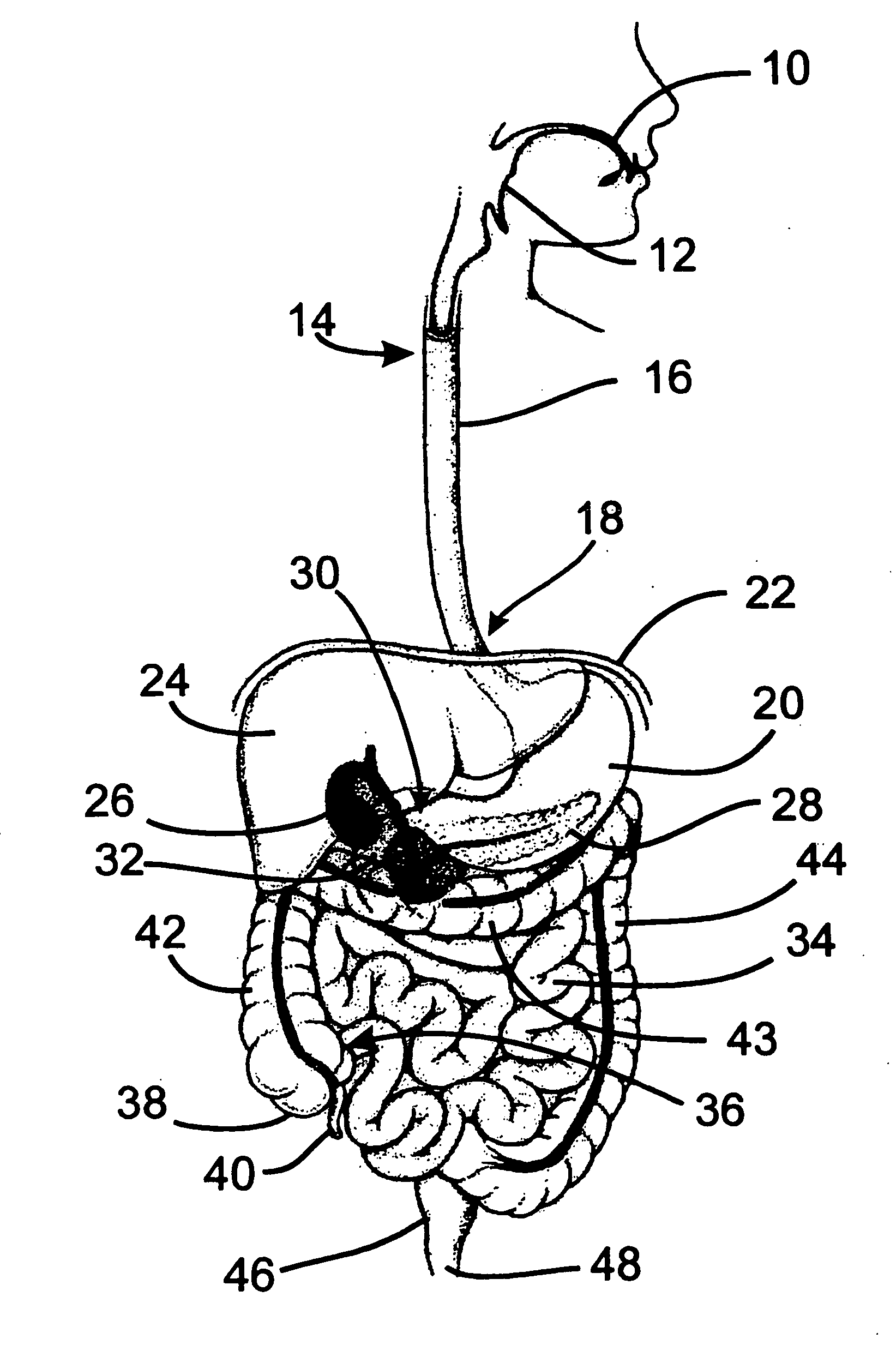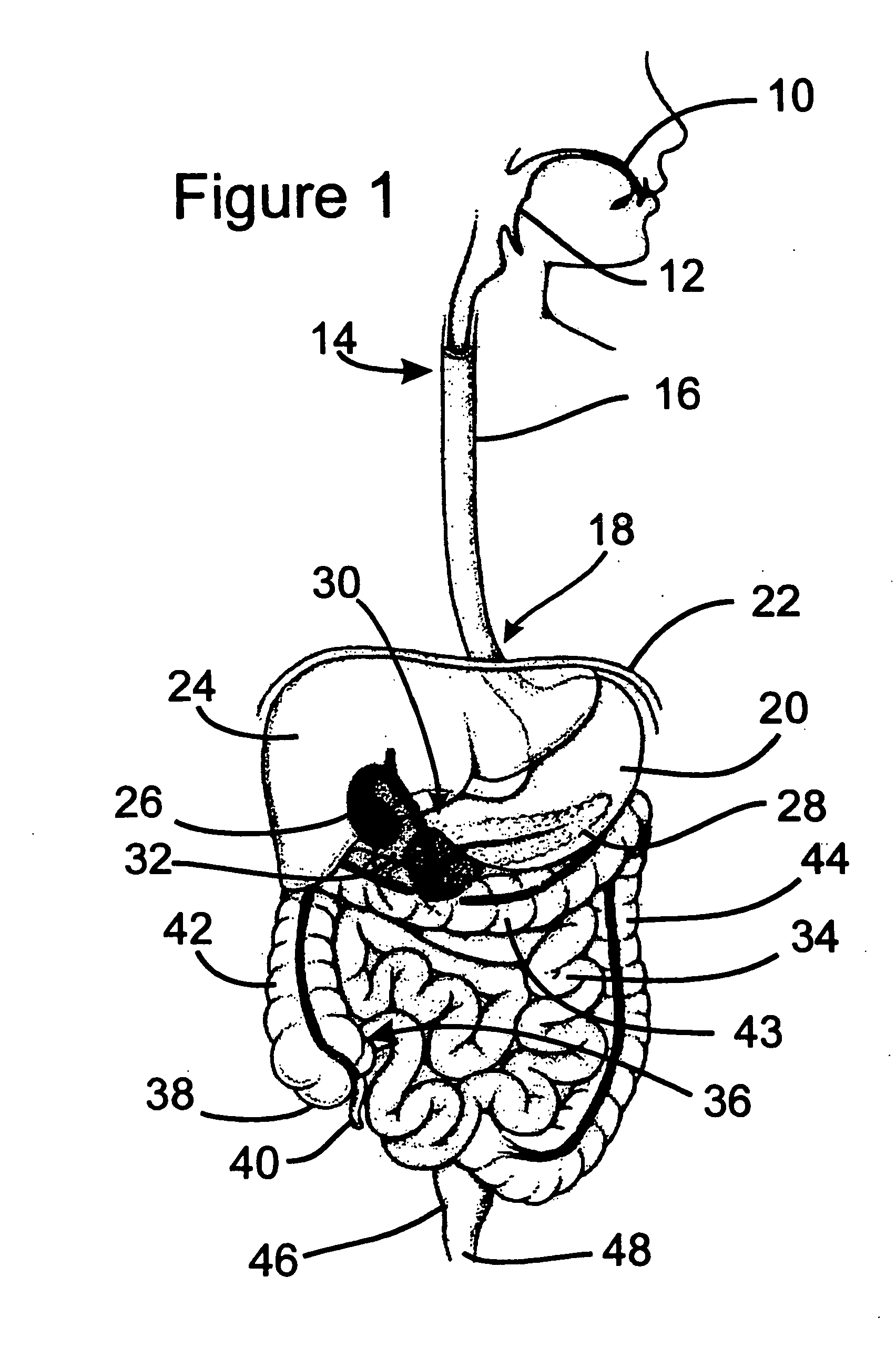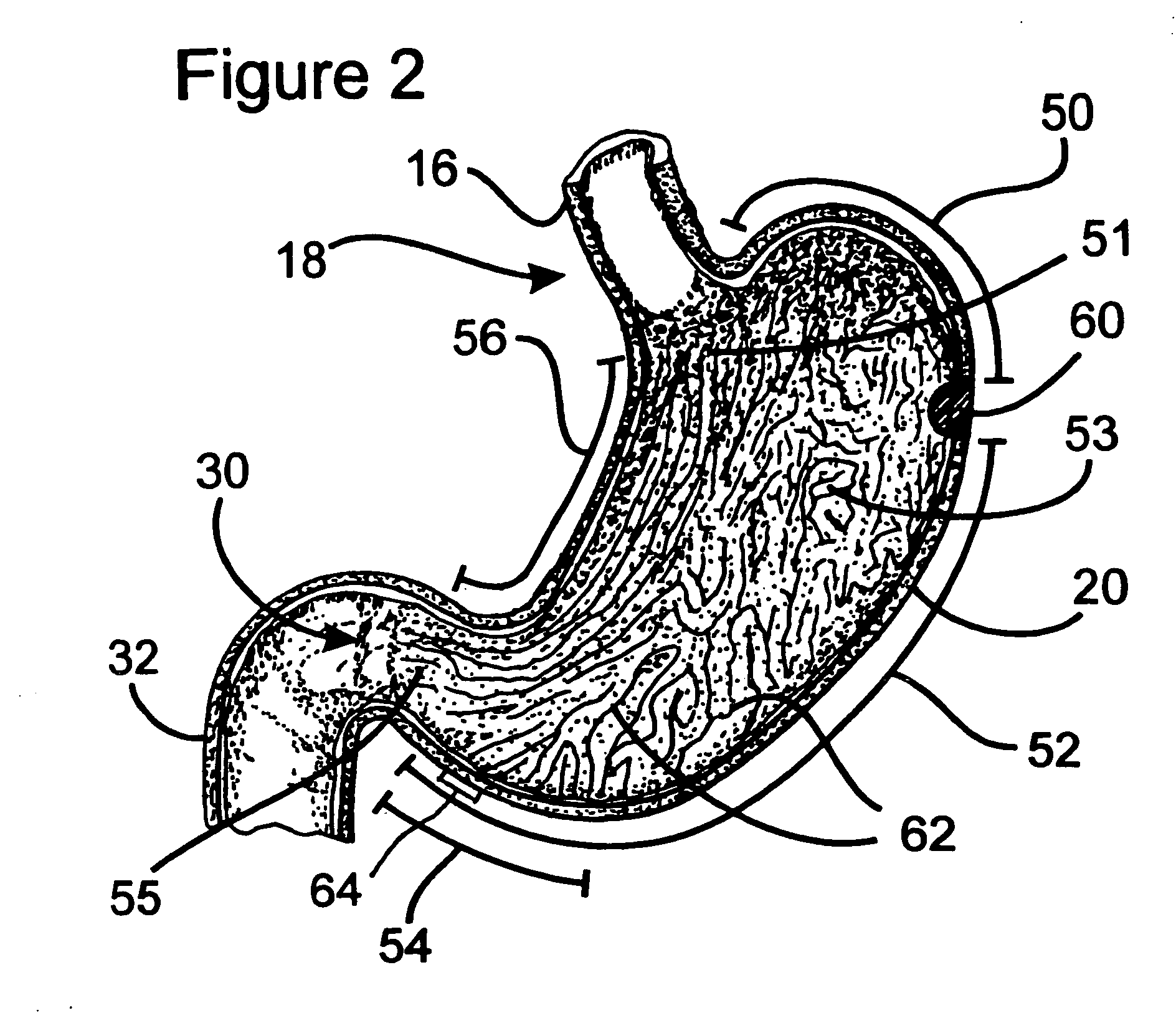Tachygastrial electrical stimulation
a technology of electrical stimulation and tachygastrium, which is applied in the field of tachygastrium electrical stimulation, can solve the problems of increasing the satiety of patients, reducing expanding the stomach, so as to reduce the intake of food, prevent or slow down stomach emptying, and slow down the transit of food through the digestive system.
- Summary
- Abstract
- Description
- Claims
- Application Information
AI Technical Summary
Benefits of technology
Problems solved by technology
Method used
Image
Examples
example 1
Tachygastrial Electrical Stimulation-Induced Tachygastria in Dogs
[0030] The aim of this study was to investigate whether tachygastrial electrical stimulation was capable of inducing tachygastria. The study was performed on six healthy female dogs. The dogs were chronically implanted with 3 pairs of electrodes on the gastric serosa along the greater curvature of the stomach. One distal pair, which was mounted 3-6 cm above the pylorus, was used for electrical stimulation. The other two pairs were about 4 and 8 cm, respectively, above the pair used for stimulation.
[0031] Each study session consisted of nine stimulation periods. After a 30 minute baseline recording (i.e., no electrical stimulation applied), tachygastrial electrical stimulation with a pulse width of 100 milliseconds and a pulse amplitude of 6 milliamperes was initiated. Four different frequencies (i.e., 7 cycles per minute (cpm), 9 cpm, 14 cpm, and 18 cpm) were tested, with each frequency used in a separate stimulation...
example 2
Tachygastrial Electrical Stimulation-Inhibited Gastric Motility in Dogs
[0035] The aim of this study was to investigate whether tachygastrial electrical stimulation is capable of inhibiting gastric motility. The study was performed in six dogs chronically implanted with one pair of gastric serosal electrodes located 4 cm above the pylorus. A chronic gastric cannula was also in place for the insertion of a manometric catheter into the stomach to measure gastric contractions. The study was performed at least two weeks after the surgical procedure to implant the electrodes and catheter and when the animals were healthy.
[0036] At the time of the experiment, each dog was fed one can of dog food. Immediately after eating, antral contractions were measured using a manometric catheter placed in the distal antrum via the gastric cannula. The recording was composed of three 30 minute consecutive postprandial periods: (1) baseline; (2) tachygastrial electrical stimulation; and (3) recovery. T...
example 3
Tachygastrial Electrical Stimulation-Induced Distention and Reduction in Gastric Accommodation in Dogs
[0038] This study was completed to determine whether tachygastrial electrical stimulation could induce gastric distention and reduce gastric accommodation. The study was performed on five healthy dogs that ranged in weight from 17 to 25 kilograms. The dogs were implanted with a gastric cannula and one pair of electrodes along the greater curvature of the stomach, 4 cm above the pylorus. Barostat studies were conducted in overnight fasted, conscious animals. A polyethylene balloon (700 milliliters volume, 10 centimeters in diameter) was introduced into the stomach via the gastric cannula and implanted on the anterior side of the stomach, about 10 cm above the pylorus.
[0039] The gastric volume was recorded under a constant minimal pressure for 30 inutes at baseline, 30 minutes with tachygastrial electrical stimulation, and 60 minutes after a liquid meal of Boost® (237 milliliters, 2...
PUM
 Login to View More
Login to View More Abstract
Description
Claims
Application Information
 Login to View More
Login to View More - R&D
- Intellectual Property
- Life Sciences
- Materials
- Tech Scout
- Unparalleled Data Quality
- Higher Quality Content
- 60% Fewer Hallucinations
Browse by: Latest US Patents, China's latest patents, Technical Efficacy Thesaurus, Application Domain, Technology Topic, Popular Technical Reports.
© 2025 PatSnap. All rights reserved.Legal|Privacy policy|Modern Slavery Act Transparency Statement|Sitemap|About US| Contact US: help@patsnap.com



